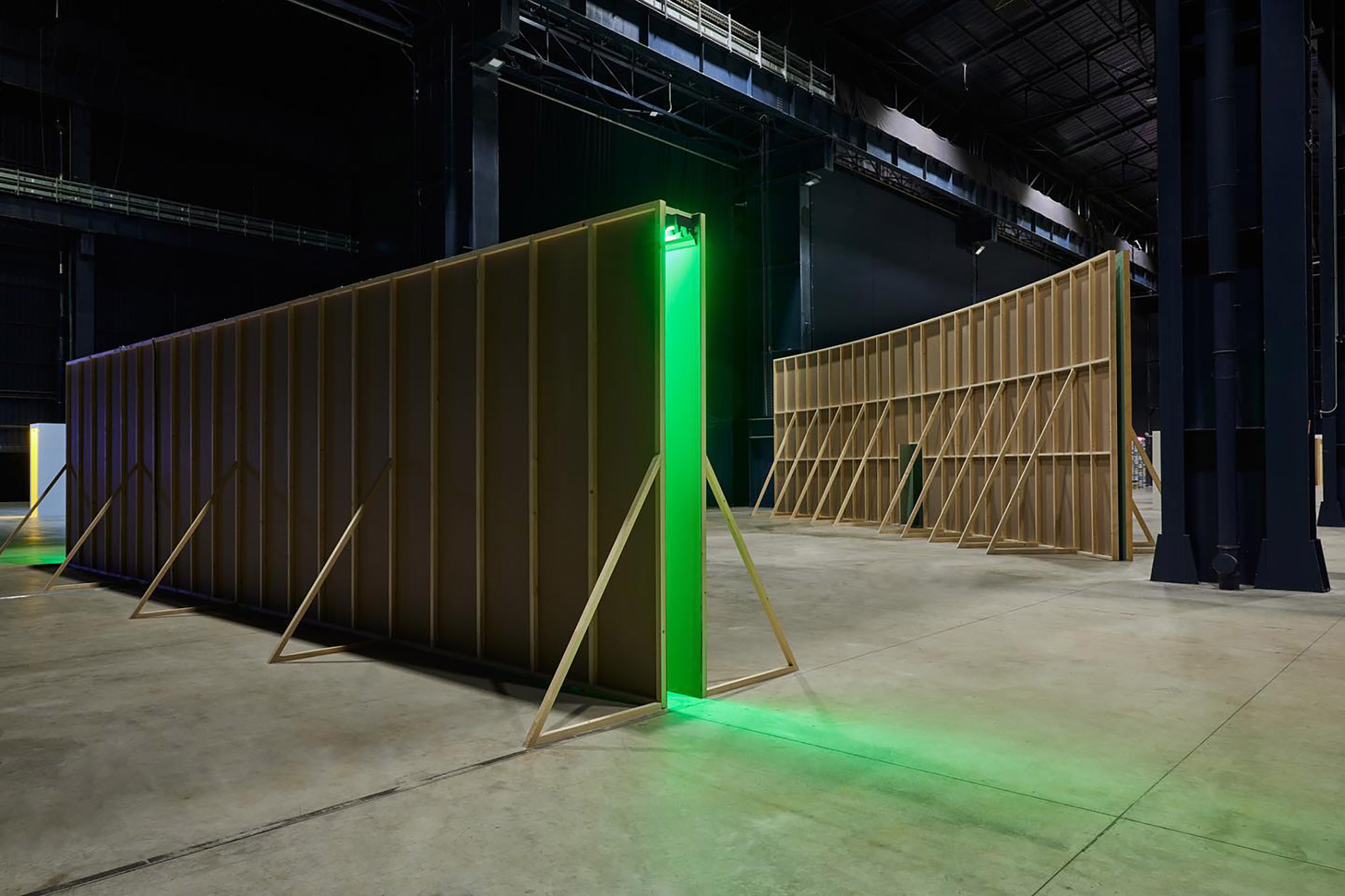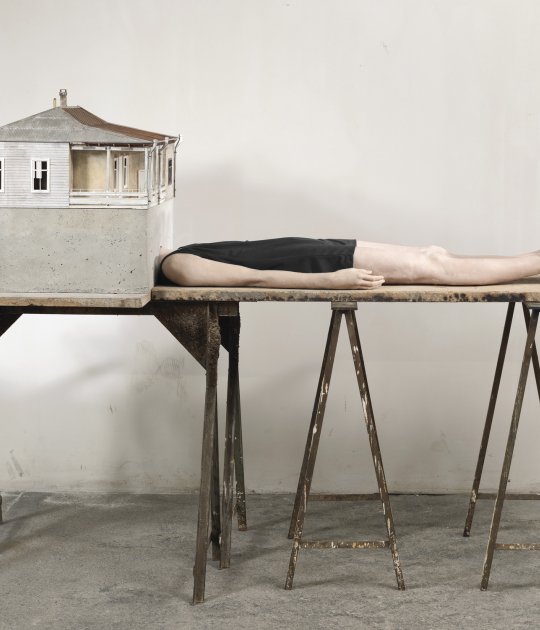His studies on architecture such as the different rooms and corridors wrapped in unique lights and textures are intended to create in the viewer a unique sensation of space, as in his well-known "Performance Corridor" (1969). This type of study of architecture and lighting has continued to be present in most of Bruce Nauman's works, and many of them are present in the Pirelli HangarBicocca exhibition.

Bruce Nauman. MAPPING THE STUDIO II with color shift, flip, flop, & flip/flop (Fat Chance John Cage), 2001. © 2022 Bruce Nauman / SIAE. Courtesy Sperone Westwater, New York.

Bruce Nauman. Green Light Corridor, 1970. Installation view at “La Jolla”, Museum of Contemporary Art San Diego, 2008. © 2022 Bruce Nauman / SIAE. Courtesy Museum of Contemporary Art San Diego.
Project description by Pirelli HangarBicocca
Pirelli HangarBicocca will present a major exhibition dedicated to Bruce Nauman, one of the world’s most prominent living artists (from September 15, 2022, to February 26, 2023). Organized by Pirelli HangarBicocca, Milan, in collaboration with Tate Modern, London, and Stedelijk Museum Amsterdam, the exhibition will provide an in-depth overview of Nauman’s spatial research and important experiments with architecture, light, sound, language and video over half a century. The exhibition "Neons Corridors Rooms" gathers thirty works created since the second half of the 1960s that explore the most innovative dimension in the practice of Bruce Nauman (born Fort Wayne, Indiana, 1941; lives and works in New Mexico), with a focus on his spatial and architectural research. The exhibition draws attention to this specific aspect of the artist’s research that has been overlooked in the past years. In a career spanning over fifty years, Nauman has investigated the human condition and the deeper meaning of art-making, embracing a wide variety of different media—installation, video, sculpture, performance, photography, drawing, and sound—with a radical and pioneering attitude.
Realized from the late 1960s, the corridors are structures designed by Bruce Nauman to manipulate, record, and test the viewer’s experience and movements within a space. Their architecture compels visitors to follow a path that is both physical and emotional, leading to a greater awareness of limitations and corporeality. The exhibition outlines the early stages and development of this body of work, starting with the very first corridor created by the artist, Performance Corridor (1969). The idea for this work came from a performance recorded in the video Walk with Contrapposto (1968)—also featured in the Milan exhibition—in which Nauman walks back and forth through a narrow passageway with exaggerated hip movements, imitating the contrapposto pose of classical sculptures. The following year, in 1969, for an exhibition at the Whitney Museum in New York, the artist displayed the structure for this video as a walk-in sculpture, encouraging visitors to use it themselves. Until then, Nauman’s videos and performances had focused on his own presence and figure, with Performance Corridor the artist shifted his attention and research to the viewers, and the relationship they establish with the space around them.
"Neons Corridors Rooms" reveals how this practice has become a means for Nauman to experiment with space and the body in increasingly radical ways. The exhibition in fact investigates the different types of corridors that followed over the years, employing various shapes, sizes and modes of fruition. The complexity of these works has grown progressively, to the point of incorporating rooms and inserting sound, light, tactile, plastic or visual elements and devices, which alter the visitor’s perception and create a sense of disorientation. In Green Light Corridor (1970), for example, a green fluorescent light floods the narrow walkable space between the two walls, while in Corridor Installation with Mirror - San Jose Installation (Double Wedge Corridor with Mirror) (1970) Nauman uses a mirror to disorient visitors as they walk through it. Made in Milan in 1971 at the Françoise Lambert Gallery, and reconstructed here for the first time, Funnel Piece (Françoise Lambert Installation) (1971) harnesses natural light as a generative factor in experience. Similarly, electronic and surveillance tools, such as closed-circuit cameras, are repurposed to explore reactions in people's behaviour and movement when they find out that they are being recorded and monitored, as is the case in Going Around the Corner Piece with Live and Taped Monitors (1970).







































